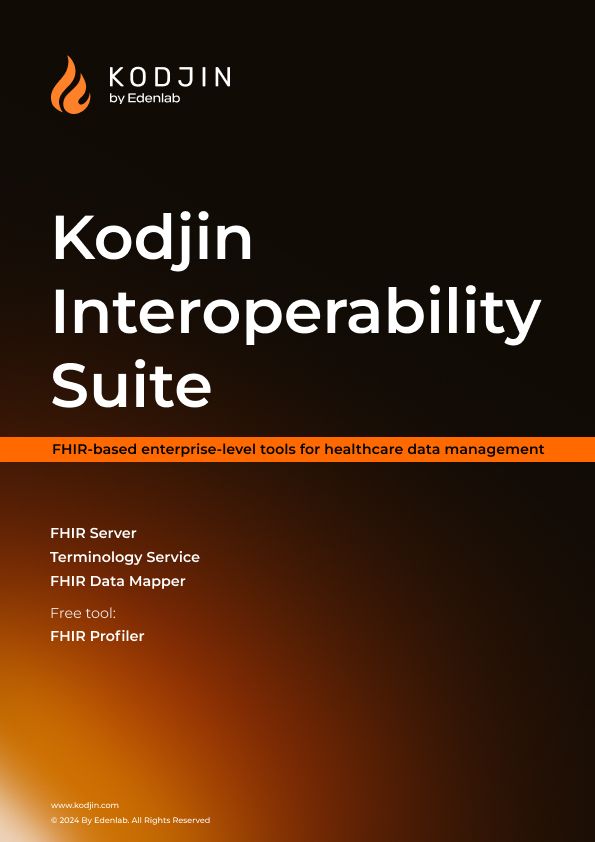In an era of aging demographics, with the surge of noncommunicable diseases and budgetary constraints, optimizing resource allocation for improving healthcare delivery’s effectiveness has become crucial. According to the World Health Organization (WHO), some of these challenges are projected to intensify and demand innovative solutions that maximize the impact of available resources while ensuring access to quality care.

This article delves into the difficulties of enhancing efficiency within government health systems. Let’s discover some strategies for streamlining health governance with proven efficiency in strengthening public healthcare systems.
The Role of Governments in Healthcare Systems Efficiency
Governments play a crucial role in ensuring universal health coverage, meaning everyone can access the full range of quality health services. Yet, their effort to secure additional budgetary resources for healthcare often becomes challenging since methods for expanding the funding the government has to allocate for healthcare are diverse and complex.
While countries like Canada, Australia, Switzerland, and Sweden have robust healthcare systems with substantial funding and use good economic times to gather money within their borders, others focus on putting more money into healthcare from their budgets or getting help from outside donors. Although these approaches are helpful, they often don’t fully meet the increasing needs of healthcare systems.
Factors That Diminish Efficiency in Healthcare Systems
In 2010, the WHO’s report on improving health system efficiency revealed that healthcare systems suffered significant inefficiencies, wasting 20-40% of resources. The World Health Organization commissioned 11 country case studies in 2013 to address this. These studies aimed to understand and document countries’ efforts to improve healthcare system efficiency, particularly in Africa, Asia, and Latin America.
Unfortunately, progress in enhancing the government healthcare system has been sluggish, hampered by stringent regulations, budget constraints, and an unceasing demand for healthcare services. In numerous countries, initiating new policies often takes several years or even decades.
Improving efficiency in healthcare often faces limitations due to the lack of data interoperability in healthcare. These limitations, rooted in fragmented healthcare systems, can hinder the quality and fairness of healthcare, with consequences for patient well-being and costs. According to the report, several factors lower healthcare efficiency:
- Low Utilization of Maternal and Child Health Services: In some countries, such as Burundi, there is limited use of maternal and child health services. This underuse can result in missed opportunities for preventive care and early interventions.
Burundi faced severe maternal and child health issues in 2005, with low service usage and high mortality rates (maternal mortality was 910 per 100,000 live births). Despite the government’s 2006 policy providing free care for children under five and pregnant women, healthcare services faced constraints, leading to stock-outs, staff strain, and payment delays.
- Poor Quality of Healthcare: Frequent stock-outs of essential medical supplies and medication can compromise the quality of care provided, leading to suboptimal health outcomes.
The previous issue led to the stock-outs of medicines in Burundi, impacting healthcare quality. Delays in payment, administrative struggles, and low morale contributed to high staff turnover rates. Poor healthcare quality was evident in plateaued delivery rates, low antenatal care visits, and minimal usage of family planning services.
- Fragmented Health Financing: When healthcare financing is fragmented by income or health risk, it can result in inequities in access to and coverage of healthcare services. This can be seen in some countries where specific populations receive more comprehensive coverage.
In Chile, the public insurer covered most Chileans (76.5%). In comparison, the private insurer competed for the rest (about 20%), which created a two-tier system where private health insurer members, low-risk and high-income, exclusively used private providers. National Health Fund beneficiaries, higher risk and lower income, relied heavily on the overburdened public sector.
- Fragmentation in Health Financing and Service Delivery: Fragmentation in financing and service delivery can lead to inefficiencies, duplication of efforts, and waste of resources within the healthcare system.
Decades of political instability in the Democratic Republic of the Congo triggered a collapse in its health system. With 195 uncoordinated projects, the system faced challenges of inefficient resource utilization, lack of coordination, and duplication of efforts. The fragmentation extended to operational planning, workforce deployment, and the supply chain, resulting in inefficiencies and suboptimal health service delivery.
- High Administrative Costs: Inefficient processes and high management costs may redirect resources from direct patient care, adding to the overall inefficiency of healthcare systems.
The Republic of Korea had three separate health insurance funds, each with its own payment rules. This complexity made it challenging for individuals to grasp the amount they were supposed to pay. Self-employed individuals, in particular, frequently found it difficult to navigate these rules, leading to inconsistencies where certain regions paid more than others. This issue made it hard to manage money well and took away resources that could be used to help patients directly.
- Duplication and Waste of Resources: Inefficient resource allocation, duplication of services, and a lack of coordination between healthcare providers can result in the waste of resources.
In the Democratic Republic of the Congo, the healthcare system relied heavily on out-of-pocket payments and international aid, resulting in challenges like misaligned priorities, duplicated efforts, and inefficient resource usage. Fragmented coordination among donors and district management teams and excessive operational planning led to workforce inefficiencies and inoperable resources.
- Misallocation of Resources: When resources are not allocated in alignment with the actual healthcare needs of the population, this can lead to insufficient health outcomes.
Despite the substantial impact of chronic diseases in Uruguay, the allocation of resources failed to align with this reality. Inadequate investments in fundamental healthcare, preventive measures, and health promotion have contributed to suboptimal health outcomes for the population.
Rethinking Efficiency in Government Healthcare Systems: Examples of Efficiency in Healthcare Systems
Despite the various factors that decline efficiency in government healthcare systems, the varying national contexts, and the array of policy tools employed to enhance healthcare efficiency, some practical recommendations emerged. In most cases, improving healthcare system efficiency is a multifaceted and continuous process, demanding careful planning and a coherent approach. So, how do you improve efficiency in healthcare?
- Prioritize Primary Healthcare: Some countries have implemented policies emphasizing primary care, maternal and child health, infectious disease prevention and treatment, and cancer management. These policies prioritize early detection of risk factors and continuous care under the guidance of a reference physician.
Adopting the International Classification of Primary Care (ICPC) aligns with the World Health Organization’s (WHO) directive to prioritize primary healthcare. In Ukraine’s healthcare system, the ICPC terminology provides a nuanced and comprehensive framework for managing clinical data in primary care settings. This terminology was tailored to cover primary care needs and ensure efficient management of multiple episodes over time. By prioritizing policies emphasizing primary care, nations can elevate the efficiency of government health systems, ensuring the early identification of risk factors and maintaining continuous and well-coordinated healthcare.
- Coordinate Financing and Delivery: The study shows that simply changing how we pay for healthcare, like through insurance, without ensuring access and quality often fails. Inadequate planning can lead to problems, such as reduced quality, lack of medicines, equipment issues, administrative burdens, and staffing shortages.
Changing healthcare payment methods without guaranteeing access and quality can backfire, highlighting the need for thorough planning to avoid problems like reduced quality, medication shortages, administrative burdens, and staff shortages.
Ukraine uses the National eHealth System and the Program of Medical Guarantees (PMG) as primary tools for enhancing healthcare financing and delivery. The PMG, centralizing health spending under the National Health Service of Ukraine (NHSU), covers a range of services and has expanded since 2018 to include specialized care and the Affordable Medicines Program.
At the same time, the eHealth system acts as a technological foundation for efficient healthcare delivery, ensuring data-driven decision-making. The eHealth system’s implementation contributes to healthcare funding’s transparency. This financial planning approach has effectively prevented reduced healthcare funding for Ukraine in 2023, even in the face of challenges.
Unsatisfied with your system’s performance? See how our enterprise-level FHIR server can enhance it. Request a demo
- Optimize the Mix of Health Worker Skills: The right combination of health worker skills and healthcare facility types can maximize the efficient use of limited healthcare resources. For example, redistributing healthcare providers through task shifting or introducing non-traditional health workers in local communities has effectively reduced disparities between urban and rural areas and led to cost savings.
The implementation of the eHealth system resulted in the broad adoption of Health Information Systems (HIS) in Ukraine, creating the need to introduce innovative technologies to healthcare professionals nationwide. The industry professionals designed the “Digital Literacy for Medics” program to share their knowledge and educational materials on digital patient care tools and improve digital literacy among clinicians in Ukraine.
The course addresses digital security, emphasizing the importance of protecting personal and patient data, and provides instructions on utilizing digital tools. Sharing the expertise of industry professionals is supposed to simplify and improve the effectiveness of clinicians’ interaction with the HISs and the national eHealth System in general.
- Target Fragmentation in Healthcare: Think of a healthcare system like a scattered puzzle; this fragmentation hampers healthcare’s efficiency.
For example, different insurance plans create disparities in care and inflate costs. Public and private plans segregate people by risk and income, making accessing good healthcare harder. Historical problems even affect how medicines are distributed.
To ensure healthcare is well-coordinated, it needs to be clarified if these changes include rules to guide patients to the right care and cost-effective treatments. We need the right mix of services, medicines, and smart usage to ensure everyone gets the care they need without huge costs.
Before implementing the national eHealth system in 2017, Ukraine faced issues like a paper-based approach and a lack of information and communication technology infrastructure that complicated the functioning of the already fragmented healthcare system.
Digitalizing the health system and developing a national clinical data repository (NCDR) operating on the FHIR standard allows for trouble-free medical information storage and exchange. FHIR targets the problem of fragmentation by guaranteeing seamless communication between all components of an FHIR-first eHealth system and ensuring semantic interoperability in healthcare.
Final Thoughts
Enhancing efficiency in government healthcare systems requires innovative solutions and transformative initiatives. The WHO’s research and recommendations highlight the importance of a systemic approach towards strengthening information systems in healthcare.
Edenlab succeeded in creating an efficient and resilient system for the future. Notably, the implementation of a national eHealth system in Ukraine displays how the digitization of the healthcare system can improve the efficiency of its governance. Embracing technologies like FHIR for interoperable healthcare data exchange catalyzes the creation of new initiatives and laws. Such initiatives can pave the way for improved healthcare efficiency, informed policymaking, and dynamic adaptation to emerging challenges.



